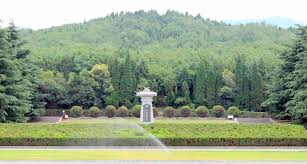
Has the Mausoleum of Qin Shi Huang ever been looted?
Records of Tomb Raiding Throughout History
The Mausoleum of Qin Shi Huang, the grand resting place of China's first emperor, has captivated imaginations for centuries, sparking countless legends and debates. One of the most persistent questions surrounding this monumental tomb is whether it has ever been breached by grave robbers.
Historical records from various dynasties do contain accounts of attempts to loot the mausoleum. Notably, there are records from the Song Dynasty suggesting that the tomb had already been entered by that time. These accounts describe treasure hunters who allegedly found their way into the complex, their greed fueled by tales of unimaginable riches buried within.
One such story involves a man named Guo Yang, who claimed to have entered the mausoleum during the Five Dynasties and Ten Kingdoms period (907-960 AD). He reportedly discovered a vast underground palace, its ceilings adorned with celestial bodies and the floor depicting the geography of China. Although the veracity of Guo's account is debated, it underscores the persistent allure of the mausoleum as a target for looters.
The Curious Silence of the Records
Intriguingly, despite the prevalence of looting tales, the most authoritative historical source on Qin Shi Huang, Sima Qian's "Records of the Grand Historian" (Shiji), makes no mention of any successful attempts to enter the tomb. This silence is particularly noteworthy considering the Shiji dedicates an entire chapter to detailing the emperor's life and reign.
Some scholars argue that Sima Qian, known for his meticulous research, would have undoubtedly documented such a significant event had it occurred during his time or earlier. This omission fuels speculation that the tomb remained undisturbed for centuries after Qin Shi Huang's burial.
The Legend of Xiang Yu
Perhaps the most famous figure linked to the alleged looting of the mausoleum is Xiang Yu, a rebel leader who played a pivotal role in the downfall of the Qin Dynasty. Legend has it that Xiang Yu, seeking revenge for the fallen Qin, unleashed his forces upon the mausoleum, plundering its treasures and setting fire to its structures.
This narrative, however, is largely based on folklore and lacks concrete historical evidence. Critics point out that contemporary historical accounts of Xiang Yu's campaign against the Qin make no mention of him targeting the mausoleum. They argue that such a massive undertaking would have been logistically improbable and politically unwise for Xiang Yu, who was focused on consolidating his power and had little to gain from desecrating the tomb of a defeated enemy.
The Debate Continues
To this day, the question of whether the Mausoleum of Qin Shi Huang has ever been breached remains a subject of intense debate among historians and archaeologists. While historical records offer tantalizing glimpses of possible looting attempts, the lack of conclusive evidence and the silence of key sources like the Shiji cast doubt on their validity.
The possibility remains that the tomb, with all its legendary treasures and secrets, still lies undisturbed beneath the earth, awaiting the day it might finally reveal its mysteries.
Q&A
1. Is there any archaeological evidence to support the claims of looting?
No, despite extensive archaeological work conducted around the mausoleum, no conclusive evidence of past looting has been found. However, the main tomb chamber, sealed deep within the complex, remains unexcavated, leaving the possibility open.
2. What measures were taken to protect the mausoleum from grave robbers?
Historical records describe elaborate security measures implemented during the tomb's construction, including booby traps, concealed entrances, and a vast network of underground passages. These accounts, if accurate, suggest a conscious effort to deter looters.
3. Why is the question of whether the mausoleum has been looted so significant?
The answer lies in the immense historical and cultural value of the site. If undisturbed, the tomb could offer an unparalleled glimpse into the Qin Dynasty, potentially holding a treasure trove of artifacts and information that could rewrite history.